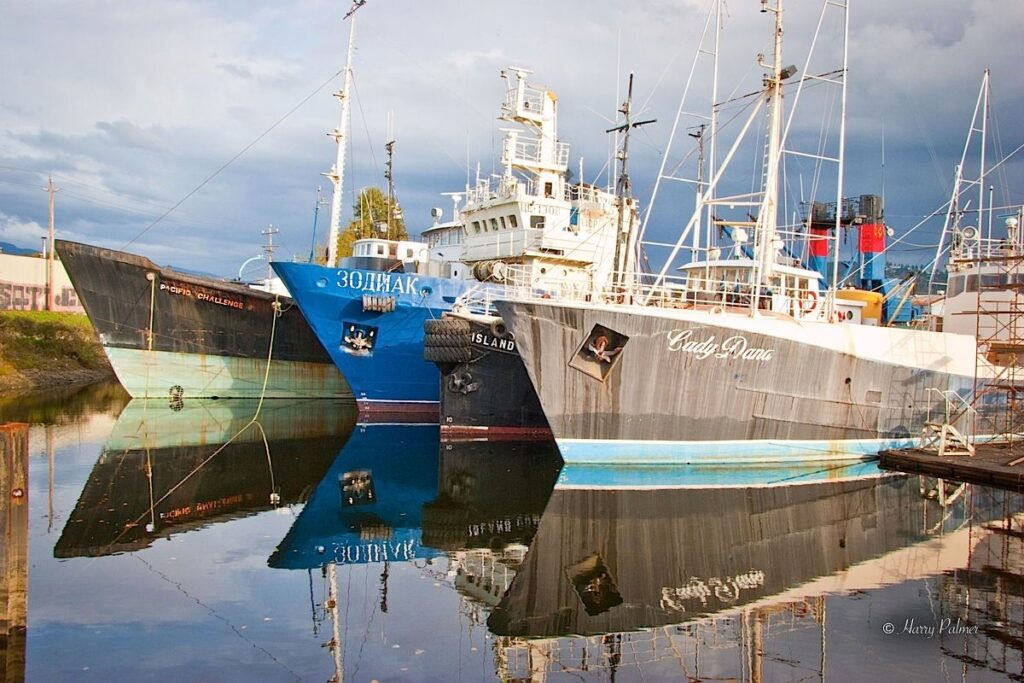The creation of a cargo ship is a meticulous and complex process that involves multiple phases, from initial design and planning to construction, assembly, and rigorous testing. This article explores the journey of building a cargo ship, highlighting key stages such as design approval, material procurement, hull fabrication, and regulatory compliance. It also examines the timeframe and financial investment required to bring these massive vessels to life, as well as the impact of external factors such as global pandemics on the shipbuilding industry.
Key Takeaways
- Cargo ship construction begins with a 4-6 month design approval process, followed by selection of a shipyard and procurement of materials, often sourced from ship breaking yards or imported.
- Building a cargo ship takes approximately 24-30 months, with costs ranging from Tk20-30 crores, depending on the vessel’s size and quality, including imported engines and navigational equipment.
- The construction process involves various stages, including the fabrication of the hull, installation of propulsion systems, and outfitting with navigational and safety equipment under the supervision of the Department of Shipping.
- Regulatory compliance is crucial, with shipbuilders needing to secure route permission and ensure their vessels are equipped with the necessary safety and weather forecasting instruments.
- External factors, such as the COVID-19 pandemic, have disrupted the shipbuilding process, highlighting the industry’s vulnerability to global events and their influence on construction timelines.
The Design and Planning Phase

Approval of Ship Design
The approval of a ship’s design is a critical step in the shipbuilding process, ensuring that the vessel will meet specific trade requirements and international regulations. A naval architect is tasked with creating a design that not only accommodates the desired cargo weight or passenger number but also adheres to speed specifications and operational efficiency. The design process involves a collaborative effort, often starting with a preliminary design preview meeting, known as a kick off, between the design team, the Recognized Organization (RO) issuing statutory certification, and the National Maritime Authority (NMA).
The design approval phase is not just about aesthetics and technical specifications; it also encompasses the ship’s steering characteristics, vibration control, and optimization of net register tonnage to minimize dues.
Once the design is finalized and approved, which can take between four to six months, the next step is to select a suitable shipyard for construction. This phase is overseen by the director general of the Department of Shipping, ensuring that all standards are met. Material procurement, often involving steel sheets, is a subsequent stage, with sources ranging from local ship breaking yards to imports from countries like China or India.
Selection of Shipyard
Once the ship design is approved, the focus shifts to the selection of a suitable shipyard. This decision is critical as it influences the efficiency of the construction process, the quality of the workmanship, and ultimately, the success of the project. The chosen shipyard must have the capacity to accommodate the vessel’s dimensions and the technical expertise to meet the specific requirements of the ship.
- Capacity and Facilities: The shipyard should have adequate space and facilities to construct the vessel, including building berths or dry docks.
- Technical Expertise: It is essential to have a skilled labor force and access to specialized subcontractors for components like propulsion machinery and deck equipment.
- Location: Proximity to suppliers and the final delivery destination can impact logistics and costs.
The shipyard’s management plays a pivotal role in coordinating the myriad of processes, from the initial drafting of plans to the final project handover.
Selecting a shipyard also involves negotiating with subcontractors for the supply of items not produced in-house, such as electric power plants and engine-room auxiliaries. The site’s layout is important, with a preference for a considerable depth inland from the berths for efficient material handling and storage.
Procurement of Materials
The procurement of materials is a critical step in shipbuilding, involving the acquisition of steel, electronics, and other components necessary for construction. The quality and availability of these materials can significantly influence the overall build time and cost.
Materials are typically sourced from specialized suppliers or can be procured from ship breaking yards, as is common in places like Chattogram. The choice between domestic sourcing and importing from countries like China or India hinges on factors such as cost, quality, and delivery times.
- Steel sheets and plates
- Electronic systems and wiring
- Propulsion components
- Navigational instruments
- Interior fittings and fixtures
Ensuring a steady supply of materials is essential to maintain the construction schedule and prevent costly delays.
The procurement process often involves complex logistics and coordination with multiple suppliers to ensure that all materials arrive at the shipyard on time and meet the required specifications.
Role of the Naval Architect
The naval architect is pivotal in the journey from concept to seaworthy vessel. Compromise is often key in achieving a design that meets the intricate balance of performance, safety, and cost-effectiveness. The architect’s role extends from initial design, influenced by specific requirements such as cargo capacity and speed, to the oversight of construction and adherence to trade needs.
Naval architects collaborate closely with marine engineers and naval engineers to ensure that the design is not only practical but also feasible for construction. Their expertise is crucial in refining design coefficients based on experience and validating them through meticulous calculations.
- Initial Instructions: May range from simple requirements to detailed specifications.
- Design Refinement: Involves calculating the effects of differences from previous ship models.
- Collaboration: Works with marine engineers and naval engineers.
- Trade Requirements: Considers the type of cargo and required speed.
The naval architect’s responsibility does not end with the drafting table; they are integral to the entire shipbuilding process, from the keel laying to the final sea trials.
Construction and Assembly

Fabrication of the Hull
The fabrication of the hull is a critical stage in the shipbuilding process, marking the transition from design to physical structure. It begins with the delivery of steel plates and sections to the shipyard, where they are stored, cleaned, straightened, shaped, and cut. These components are then assembled, often on a building berth or slipway, which serves as an assembly area rather than a ship in its own right.
During this phase, the shipbuilder must also coordinate with subcontractors for essential items such as the electric power plant, propulsion machinery, and deck machinery. This collaboration ensures that all parts of the ship come together seamlessly.
- Fabrication and assembly
- Coordination with subcontractors
- Preparation of materials
The construction of the hull is a pivotal moment that sets the foundation for the entire vessel. It is a complex task that requires precision and careful planning to ensure that all subsequent stages of shipbuilding can proceed without delay.
Installation of Propulsion and Power Systems
The installation of propulsion and power systems is a critical stage in the construction of a cargo ship. This phase involves integrating the main power generation and distribution systems, which are essential for the vessel’s operation. Energy storage solutions and electric propulsion are becoming increasingly important, as they contribute to the ship’s efficiency and environmental performance.
The propulsion package typically includes engines and propellers, as well as engine-room auxiliaries. Deck machinery, anchors, and cables are also installed during this phase. The complexity of production planning and control during this stage cannot be overstated, with a focus on managing subcontracts, assembly, and installation while keeping costs as low as possible.
The shift towards more sustainable power solutions is evident, with companies like SEACOR converting vessels to battery hybrid power and the introduction of sail-powered technology to reduce fuel consumption.
The table below outlines some recent advancements in propulsion and power systems for cargo ships:
| Date | Event |
|---|---|
| 01 Feb 2024 | MAN Propulsion Package for GTS’ Tanker Newbuilds |
| 25 Jan 2024 | SEACOR Converts Four PSVs to Battery Hybrid Power |
Outfitting with Navigational Equipment
Once the cargo ship’s structure is in place, the focus shifts to the critical task of outfitting it with navigational equipment. Modern ships are equipped with a variety of navigational tools to ensure safe and efficient voyages. This phase involves the installation of sophisticated electronics and instruments that aid in navigation and communication.
The navigational equipment includes, but is not limited to, radar systems, GPS, sonar, automatic identification systems (AIS), and electronic chart display and information systems (ECDIS). Each piece of equipment plays a vital role in the ship’s ability to travel safely through international waters.
The installation process is meticulous and requires careful coordination with suppliers and technicians to ensure that all systems are integrated properly and function cohesively.
Ensuring that the equipment is properly installed and tested is paramount, as any malfunction could lead to navigational errors with serious consequences. The ship’s crew is also trained to operate these systems effectively, which is an essential part of the outfitting process.
Subcontracting and Supply Chain Management
In the intricate dance of shipbuilding, subcontracting and supply chain management play pivotal roles. The Supply Chain Lead for the CSC program is tasked with the overarching responsibility of ensuring the seamless execution of the entire CSC Supply Chain, which includes a multitude of components and services.
Effective supply chain management hinges on the ability to provide substitute options and maintain visibility throughout the process. International shipping partners, acting as agile problem-solvers, offer alternative solutions to mitigate the impact of delays. They work collaboratively to develop backup plans and diversification strategies, which are crucial for preparedness against unforeseen disruptions.
To ensure the continuity of the shipbuilding process, it is vital to coordinate supply chain operations with carrier schedules, communicate deadlines clearly, and monitor progress meticulously. Adhering to these practices helps in minimizing delays and guarantees a smooth shipping procedure.
The table below outlines key aspects of supply chain management in shipbuilding:
| Aspect | Description |
|---|---|
| Visibility | Real-time tracking of materials and components. |
| Agility | Ability to adjust plans quickly in response to changes. |
| Coordination | Alignment with carrier schedules and deadlines. |
| Communication | Clear dissemination of information to all stakeholders. |
The Launching and Outfitting Process

Preparation for Launch
The preparation for launch is a critical phase in ship construction, marking the transition from dry dock to water. Careful coordination and meticulous planning are essential to ensure a smooth transition. The ship is inspected thoroughly to confirm that all structural components are properly secured and that the vessel is watertight.
During this stage, the following checklist is often used:
- Inspection of the hull integrity
- Verification of proper weight distribution
- Ensuring all safety protocols are in place
- Coordination with the shipyard for launch logistics
The culmination of this phase is a testament to the shipyard’s commitment to precision and safety, as the vessel is prepared to touch water for the first time.
Once the checklist is completed, the ship is positioned on the launching platform. The launch method, whether it be a sideways launch or a stern-first slide into the water, is chosen based on the shipyard’s facilities and the ship’s design. This momentous event is often celebrated with a ceremony, symbolizing the ship’s readiness to embark on sea trials and final outfitting.
Final Assembly and Outfitting
Once the cargo ship’s hull has been fabricated and launched, the final assembly and outfitting phase begins. This crucial stage involves the installation of all necessary components that make the ship operational. The shipyard becomes a beehive of activity as various workmen, including steelworkers, welders, shipwrights, joiners, plumbers, turners, engine fitters, electricians, riggers, and painters, come together to complete the vessel.
During this phase, items such as the engine, navigation equipment, anchors, cables, and even furniture and furnishings are installed on board. The process is a complex orchestration of tasks that requires meticulous production planning and control. Subcontractors often play a significant role, supplying specialized components like the propulsion system and deck machinery.
The efficiency of the outfitting process can significantly affect the overall timeline for shipbuilding. It is a period where coordination and quality control are paramount to ensure that all systems function seamlessly together.
The outfitting process not only includes the installation of equipment but also the integration of complex systems. This ensures that the ship is ready for its intended operational duties. The shipyard’s layout is designed to support this process, with materials and subassemblies flowing towards the berths for final assembly.
Sea Trials and Adjustments
Following the completion of the ship’s construction, sea trials are conducted to test the vessel’s performance and ensure it meets the necessary specifications and safety standards. These trials are a critical phase in shipbuilding, serving as a final validation of the ship’s design and construction integrity.
During sea trials, various systems and operations are rigorously tested, including speed, maneuverability, equipment functionality, and safety features. Adjustments may be made based on the trial outcomes to optimize the ship’s performance. For instance, the LITTORAL COMBAT SHIP USS KINGSVILLE recently completed its acceptance trials, marking a significant milestone before its official commissioning.
The success of sea trials is pivotal for the shipyard’s reputation and the satisfaction of the shipowner. It is the last opportunity to address any concerns before the vessel enters service.
The table below summarizes the key aspects evaluated during sea trials:
| Aspect Evaluated | Description |
|---|---|
| Speed | Verification of the ship’s maximum and cruising speeds |
| Maneuverability | Testing of steering systems and navigational agility |
| Equipment Functionality | Assessment of onboard systems, including propulsion and power |
| Safety Features | Inspection of life-saving appliances and emergency protocols |
Regulatory Compliance and Documentation

Obtaining Route Permission
Once the construction of a cargo ship is nearing completion, obtaining route permission becomes a critical step. This involves a detailed application process where the ship’s intended routes are submitted for approval. Negotiated routings are often necessary, especially when dealing with domestic freight, to ensure the most efficient path is taken. This process is not only about the geographical distance but also about optimizing the route to avoid congested areas and adverse weather conditions.
The complexity of routing a cargo ship is underscored by the need to consider real-time data on currents, storms, and traffic patterns. A skilled logistics partner is invaluable in this phase, as they can analyze various variables to determine the most efficient and safe route.
The importance of routing extends beyond mere distance; it’s about finding the path that ensures timely delivery and safety of the cargo. As such, the process of obtaining route permission is a meticulous one that requires careful planning and consideration of multiple factors.
Safety and Weather Forecasting Instruments
Ensuring the safety of cargo ships and their crews is paramount, which is why safety and weather forecasting instruments are critical components of any vessel. These instruments provide real-time data that can help in navigating through treacherous waters and avoiding natural calamities.
- Emergency Position Indicating Radio Beacons (EPIRBs) alert rescue services in case of an emergency.
- Radar systems detect other vessels and potential hazards, even in poor visibility.
- Automatic Identification Systems (AIS) transmit the ship’s location to other ships and coastal authorities.
- Weather routing software, like Blue Wasp Marine’s Pelican, can predict performance under various wind conditions.
The integration of advanced forecasting tools not only enhances safety but also optimizes route planning, leading to increased efficiency and reduced operational costs.
The installation of these systems is a meticulous process, often involving rigorous testing to ensure reliability. Compliance with international maritime safety standards is non-negotiable, and vessels must be equipped with the latest technology to navigate the global seas securely.
Inspection by the Department of Shipping
Following the meticulous construction and assembly phases, the final step before a cargo ship can begin its operational life is the Inspection by the Department of Shipping. This crucial process ensures that the vessel meets all the necessary safety and regulatory standards. The inspection encompasses a thorough review of the ship’s structural integrity, safety measures, and emergency equipment, including the adequacy of lifeboats and other lifesaving devices.
The Department of Shipping supervises the construction to confirm compliance with international regulations, which dictate everything from steering characteristics to the minimum net register tonnage—a key factor in determining harbor dues. The ship must not only be functional and safe but also possess an attractive appearance and be free from issues such as troublesome vibration.
The inspection is not merely a formality but a rigorous vetting process that can influence the ship’s ability to operate in certain waters and under specific conditions.
Upon successful inspection, the ship is granted the necessary certifications, which are as vital to a ship as a passport is to a traveler. These documents serve as a testament to the ship’s seaworthiness and adherence to global maritime standards.
Timeframe and Investment

Duration of Shipbuilding
The duration of shipbuilding varies significantly depending on the type and size of the vessel. Small boats or ships, such as fishing vessels or small pleasure boats, may take a few weeks to a few months to build. On the other hand, larger vessels, such as cargo ships, require a more extensive timeframe for completion.
The construction of a cargo ship is a meticulous process that involves various stages, from design approval to the final outfitting. The complexity of the ship’s design and the capabilities required can greatly influence the construction timeline.
For instance, the design approval process alone can take between four to six months before construction even begins. Once the shipyard is selected and materials are procured, the actual assembly of the ship commences. This phase is carried out under strict supervision to ensure compliance with safety and design specifications.
The table below provides a general overview of the timeframes associated with different stages of shipbuilding:
| Stage of Construction | Estimated Timeframe |
|---|---|
| Design Approval | 4-6 months |
| Material Procurement | 2-3 months |
| Hull Fabrication | 6-12 months |
| Assembly & Outfitting | 6-12 months |
| Sea Trials | 1-2 months |
It is important to note that these timeframes are indicative and can be affected by various external factors such as supply chain issues, technical challenges, and regulatory compliance.
Cost Factors and Investment Range
The financial commitment to build a cargo ship is substantial, with a myriad of factors influencing the total investment required. The cost of constructing a vessel varies widely depending on its size, complexity, and the technology used. For instance, a mid-sized container ship may cost anywhere from $50 million to $200 million, with larger and more specialized ships demanding even higher figures.
The initial design phase, often overlooked, can itself be a significant expense, with fees for naval architectural services reaching into the hundreds of thousands.
Material costs, labor, and the intricacies of the production process also play crucial roles in determining the final price tag. Subcontracting and the management of the supply chain are complex undertakings that require careful financial planning to ensure costs are kept as low as possible. Additionally, the operational availability of the shipyard, which may vary from short-term projects to those extending beyond 10 months, can affect the overall investment.
It’s important to note that these figures are subject to change due to market fluctuations, availability of materials, and labor costs. The partnership between major industry players, such as the joint venture between EDGE Group and Fincantieri, highlights the scale of investment and the commercial pipelines involved in shipbuilding, which can reach into the tens of billions.
Impact of External Factors on Construction Timeline
The construction timeline of a cargo ship can be significantly influenced by a variety of external factors. Proactive planning and transparent communication are essential in mitigating the risks associated with these variables. Factors such as payload, speed, fuel efficiency, and safety are taken into account during the design and construction phases, but external elements can still lead to unforeseen delays.
During peak seasons and global events, the shipping industry can experience congestion akin to a bustling marketplace during holiday sales. Ports may become overcrowded, customs processes slowed, and shipping rates increased. Additionally, events such as trade shows or political unrest can further exacerbate disruptions.
To ensure timely delivery and maintain customer satisfaction, it is crucial to anticipate potential delays. Logistics partners with expertise in international shipping can provide valuable insights by analyzing real-time data and historical trends. This allows for the identification of bottlenecks before they become critical, ensuring that the shipbuilding process stays on track.
Understanding the impact of these external factors and incorporating flexibility into the shipbuilding schedule can help avoid costly setbacks. Here is a list of common external factors that can affect the construction timeline:
- Peak shipping seasons
- Global events and trade exhibitions
- Political turmoil and regulatory changes
- Supply chain disruptions
- Weather conditions and natural disasters
Conclusion
The construction of cargo ships is a meticulous and time-consuming process that blends the art of traditional shipbuilding with modern scientific principles. From the initial design approval, which can take up to six months, to the final touches that ready a vessel for the open sea, the journey of creating a cargo ship is a testament to human ingenuity and engineering prowess. Shipyards in Barishal have demonstrated their capability to build at least one cargo or passenger vessel annually, with the construction period ranging from 24 to 30 months and investments reaching up to Tk30 crores. Despite challenges such as the coronavirus pandemic, these shipyards continue to procure materials both locally and internationally, ensuring that each ship is equipped with the necessary engines, rudders, and navigational instruments. As the industry evolves, the potential for Barishal’s shipyards to serve the international market grows, promising a future where the art of ship construction continues to thrive and expand.
Frequently Asked Questions
What are the main phases in the construction of a cargo ship?
The main phases in the construction of a cargo ship include the Design and Planning Phase, Construction and Assembly, Launching and Outfitting Process, and ensuring Regulatory Compliance and Documentation.
How long does it take to design and approve a ship design?
The design of a ship is typically approved within four to six months, after which the shipyard for construction is selected.
What materials are used in shipbuilding, and where are they procured from?
Steel sheets are the primary materials used in shipbuilding, which are either procured from ship breaking yards in Chattogram or imported from countries like China or India.
How long does it take to build a cargo ship?
Building a cargo ship takes approximately 24 to 30 months, depending on the size and quality of the vessel.
What kind of investment is required to build a cargo ship?
The investment required to build a cargo ship ranges from Tk20 to 30 crores, which varies based on the size and quality of the ship.
What are the requirements for a ship to obtain route permission?
To obtain route permission, every vessel must install rudders and some instruments for weather forecasting, and the owner must apply to the BIWTA after completing the vessel.








Thanks for sharing. I read many of your blog posts, cool, your blog is very good.